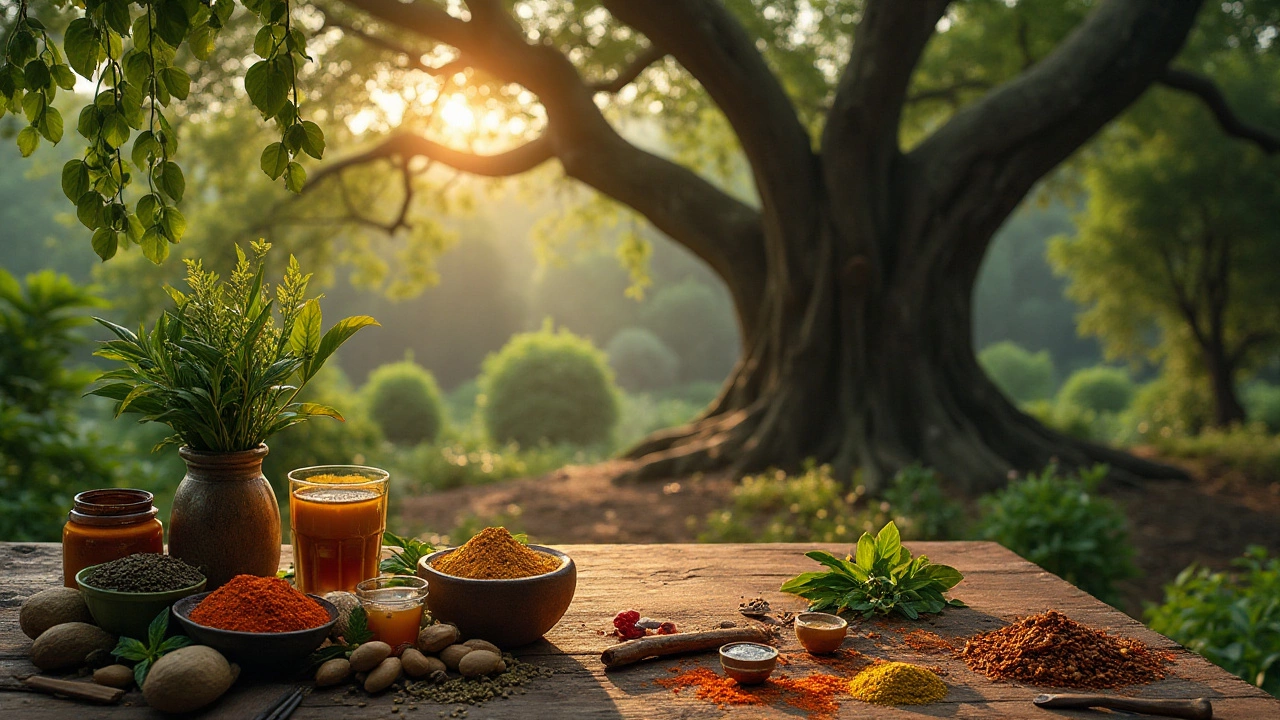Traditional Remedies: Ancient Indian Healing Practices Still Used Today
When you think of traditional remedies, natural, time-tested solutions used in homes across India for common health issues. Also known as folk medicine, these practices rely on ingredients found in kitchens and local markets—not pharmacies. They’re not relics. They’re alive. In villages and cities alike, people reach for turmeric, neem, honey, and ginger before they reach for pills. This isn’t just tradition—it’s practical wisdom passed from grandmothers to grandchildren.
These remedies are deeply tied to Ayurveda, India’s ancient system of holistic health that balances body, mind, and spirit through diet, herbs, and lifestyle. While Ayurveda has formal clinics and trained practitioners, its core principles live in everyday actions: a spoon of honey with cinnamon for a sore throat, a warm oil massage for joint pain, or drinking tulsi tea to fight off a cold. You don’t need a degree to use them. You just need to know what works.
And they work because they’re grounded in real biology. Turmeric’s curcumin reduces inflammation. Honey kills bacteria. Ginger speeds digestion and eases nausea. These aren’t myths—they’re science-backed tools that cost pennies. Even hospitals in India often combine modern medicine with these remedies, recognizing their value. You’ll find them in households from Punjab to Kerala, used for everything from fever to insomnia to skin rashes.
What makes these remedies unique is how they connect to culture. They’re not just about healing the body—they’re about honoring family, season, and place. A mother prepares a paste of sandalwood and rosewater for her child’s fever because her mother did the same. A farmer rubs castor oil on his knees because he’s done it since he was twelve. These aren’t random habits. They’re rituals shaped by generations of trial, error, and care.
There’s no single book that holds all the answers. Each region has its own version. In Gujarat, they use amla for immunity. In Tamil Nadu, it’s black pepper with milk for coughs. In Bengal, mustard oil massages are routine for babies. These variations aren’t contradictions—they’re proof that traditional remedies adapt, survive, and thrive because they’re rooted in real experience, not theory.
What you’ll find below isn’t a list of old wives’ tales. It’s a collection of real, tested practices—some simple enough to start today, others tied to deeper cultural rituals. You’ll see how herbal medicine, the use of plants like neem, ashwagandha, and holy basil for healing fits into daily life. You’ll learn why certain remedies are used in winter, not summer. And you’ll understand how these practices survive even as modern medicine spreads. No fluff. No hype. Just what people actually do, and why it still makes sense.





